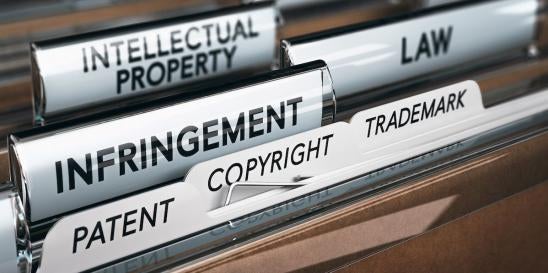The US Court of Appeals for the Federal Circuit vacated a stipulated judgment of noninfringement in a patent infringement dispute after construing a disputed claim term, taking a more literal approach than the district court based on the meanings of the individual words of the claim language. Malvern Panalytical Inc. v. TA Instruments-Waters LLC, Case No. 22-1439 (Fed. Cir. Nov. 1, 2023) (Prost, Hughes, Cunningham, JJ.)
The dispute involved a suit brought by Malvern against TA Instruments-Waters and Waters Technologies Corporation (collectively, Waters) alleging infringement of two patents. Both asserted patents disclose microcalorimeters for measuring the amount of energy absorbed or released during a chemical reaction between two compounds and include independent claims directed to “a micro titration calorimetry system” having several elements, including an automatic pipette assembly that is guided into at least two positions via another component—namely, the disputed “pipette guiding mechanism.”
The pre-grant publication of a commonly assigned but unrelated patent was cited during the prosecution of an unrelated Malvern patent because the examiner understood the disclosure of that patent to recite an automated pipette guiding mechanism. The applicant initially tried to rebut the rejections by arguing that the disclosure of that patent recited a “purely passive [pipette] guiding mechanism.” However, after the examiner found the arguments unpersuasive, the applicant simply changed course and argued that the cited reference was not prior art because the publication and unrelated patent had a common assignee.
Malvern then requested supplemental examination of the now asserted patent under 35 U.S.C. § 257. In connection with the supplemental examination, Malvern filed an information disclosure statement (IDS) that included 154 documents, seven of which were office actions from the prosecution of the unrelated patent. Malvern did not describe or characterize the office actions in any way.
Turning back to the litigation, during claim construction proceedings, Malvern argued that “pipette guiding mechanism” should mean a “mechanism that guides the pipette assembly” while Waters argued that it should mean a “mechanism that manually guides the pipette assembly.” The district court concluded that the term “pipette guiding mechanism” was a coined term because Malvern presented no evidence that a “pipette guiding mechanism” was known or readily understandable to a person of ordinary skill in the art. Based on that determination, the district court relied on intrinsic evidence to determine the objective boundaries of the term.
The district court found that the statement made during the prosecution of the unrelated patent was relevant to the claim construction because the asserted and unrelated patents were assigned to Malvern. The district court also considered these statements as having been incorporated into the intrinsic record of the asserted patent because it concluded that Malvern agreed to incorporate the statements when it cited the office actions filed during supplemental examination of the asserted patent. Malvern appealed.
The Federal Circuit explained that it was appropriate to construe the term “pipette guiding mechanism” by looking into the individual meanings of the words “pipette,” “guiding” and “mechanism.” The Court indicated that when the patentee offers an ascertainable definition for a claim term in the body of the claim, precedent does not support attaching a more particularized meaning to the claim term unless a narrower construction is required by the specification or prosecution history. The Court elaborated that when the broad language of a claim supports a broad construction, the patentee is entitled to the full range of that claim term. Here, the claim language included no restrictions that would suggest that the “pipette guiding mechanism” was only manual, and therefore the broad claim language supported the conclusion that the “pipette guiding mechanism” encompassed both manual and automatic embodiments.
The Federal Circuit rejected the district court’s analysis of the “pipette guiding mechanism” because it predominantly focused on whether this term had a plain and ordinary meaning in the art and had failed to consider whether it had a plain and ordinary meaning within the context of the patent. The Court noted that the plain and ordinary meaning of a claim element should be discerned by examining the claims in the context of the specification and the prosecution history.
Waters argued that the “pipette guiding mechanism” could not be automatic because the specification never explicitly described it as such. The Federal Circuit rejected this argument because the specification described the guiding mechanism broadly without limitation as to either manual or automatic embodiments. The Court also rejected the argument that the prosecution of the asserted patent during supplemental examination limited the guiding mechanism to manual embodiments because the mere inclusion of office actions of an unrelated patent in an IDS filed during supplemental examination did not inform the meaning of the claimed “pipette guiding mechanism.” The Court explained that once a reference has been incorporated into the intrinsic record, such as by citation in an IDS, the amount of characterization of that reference impacts how informative the reference is when evaluating the patent claims. Therefore, by merely listing a reference in an IDS, an applicant is simply admitting that the cited reference may be material to prosecution of the pending claims. In absence of further characterization, citing a reference in an IDS does not raise to an admission of materiality or that the cited listed reference’s characterization or use of a term bears on the proper construction of that term in the claims of an unrelated patent.
The Federal Circuit therefore vacated and remanded for further proceedings.




 i
i


